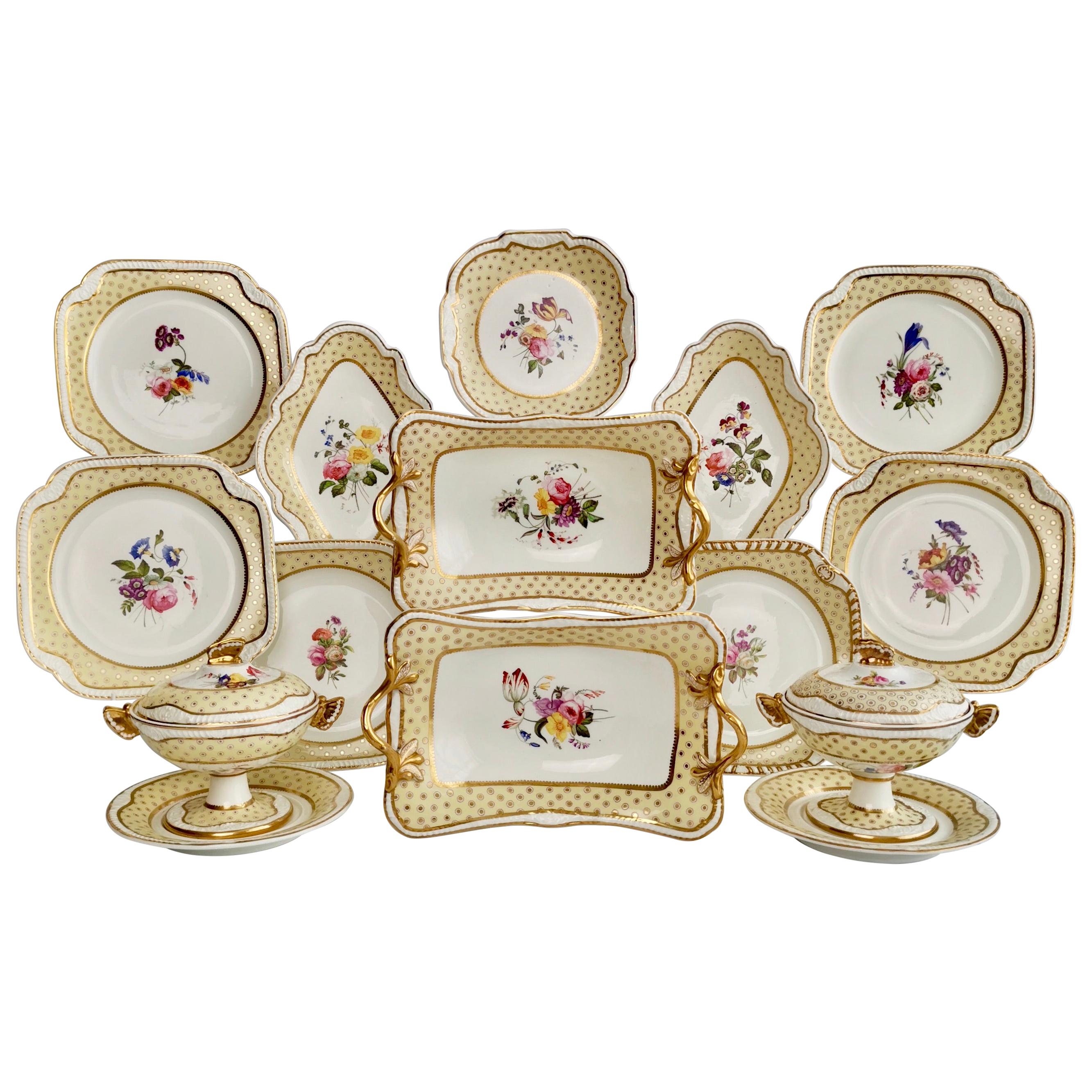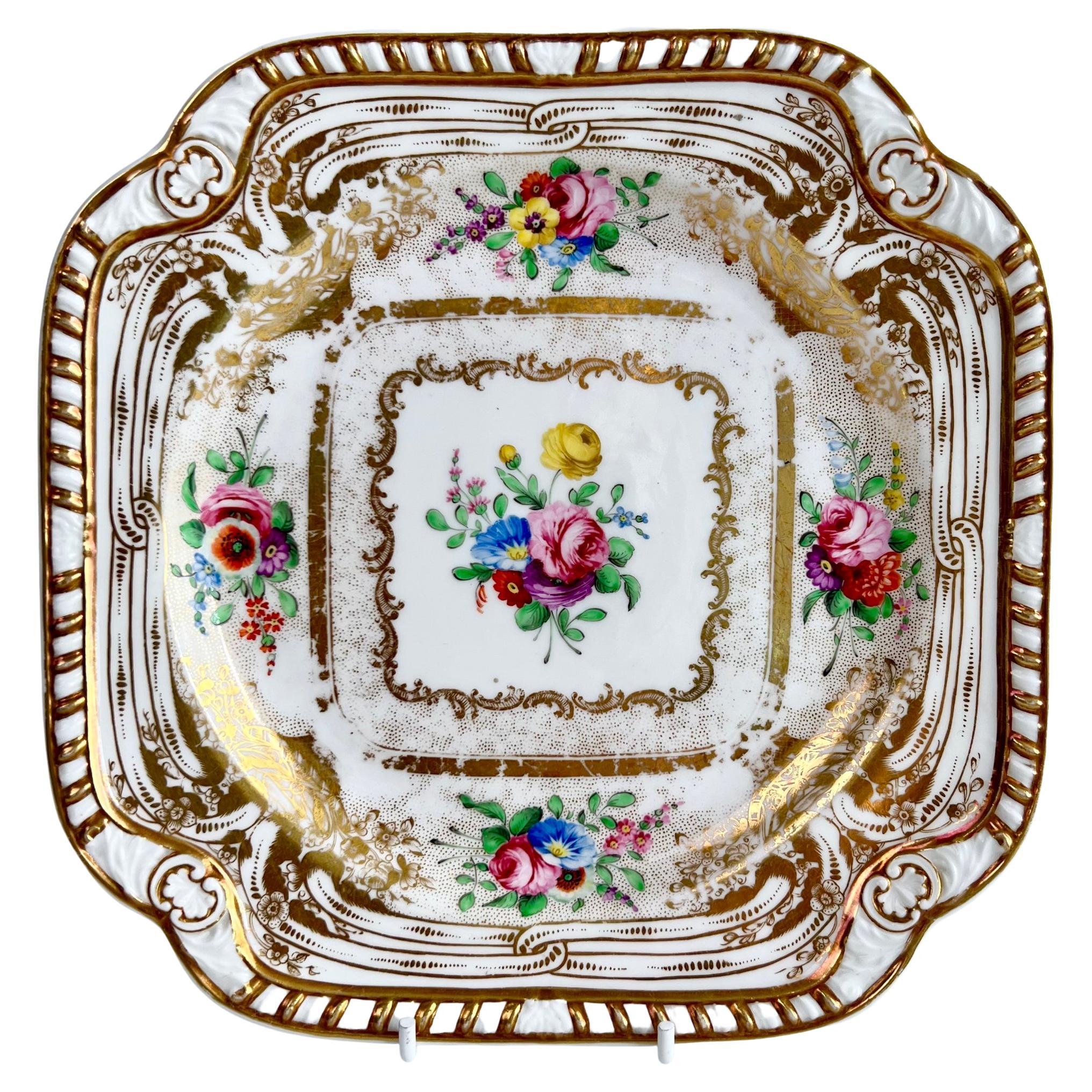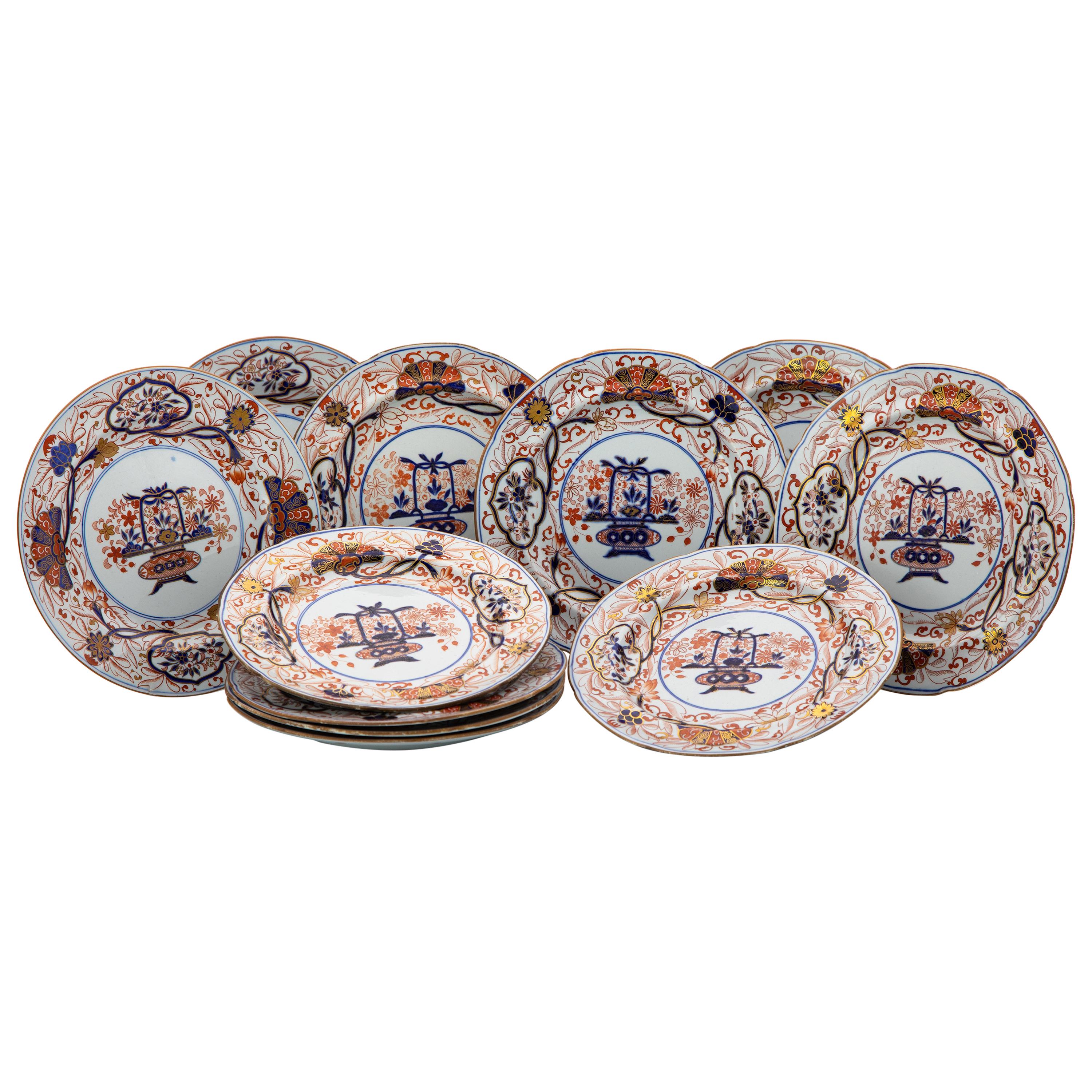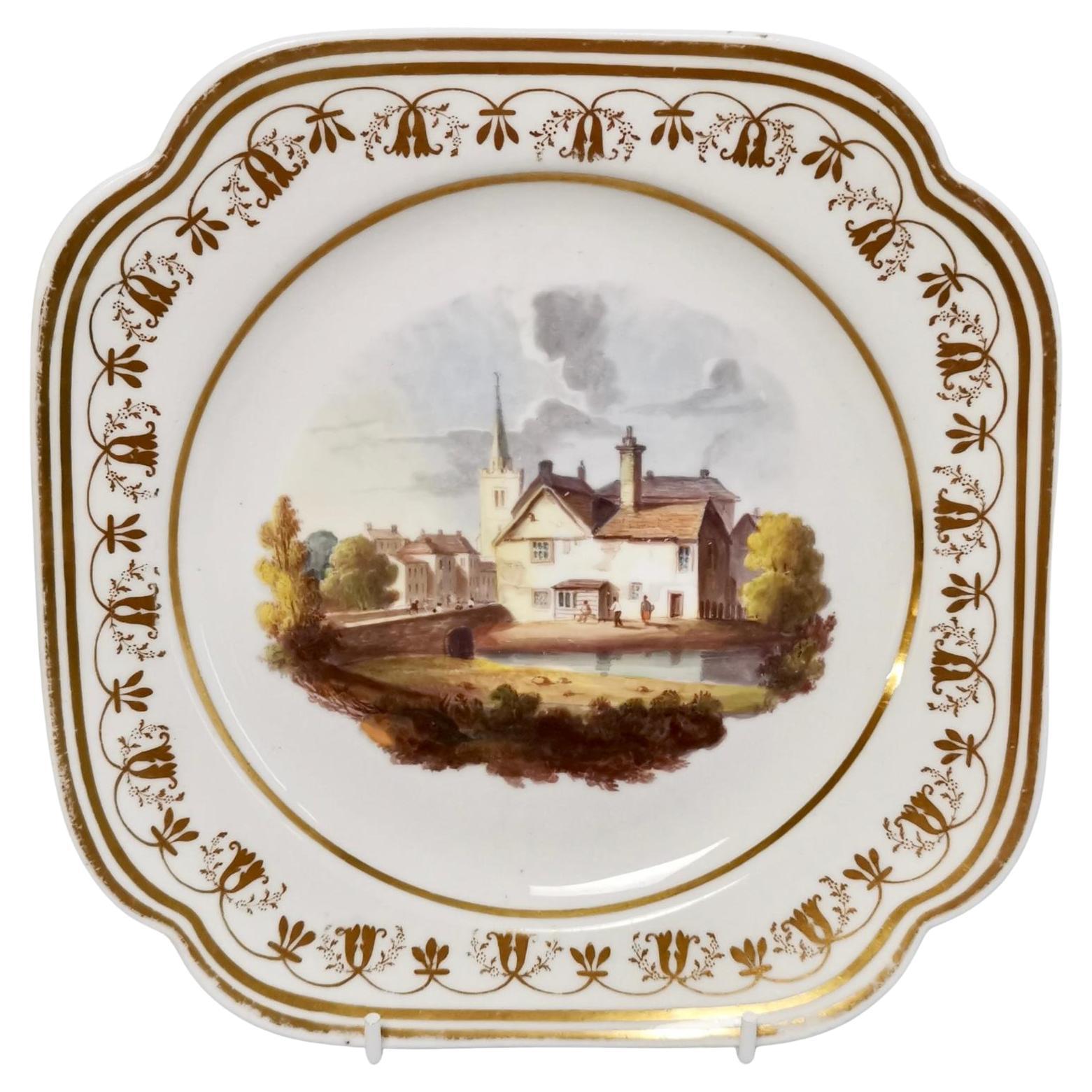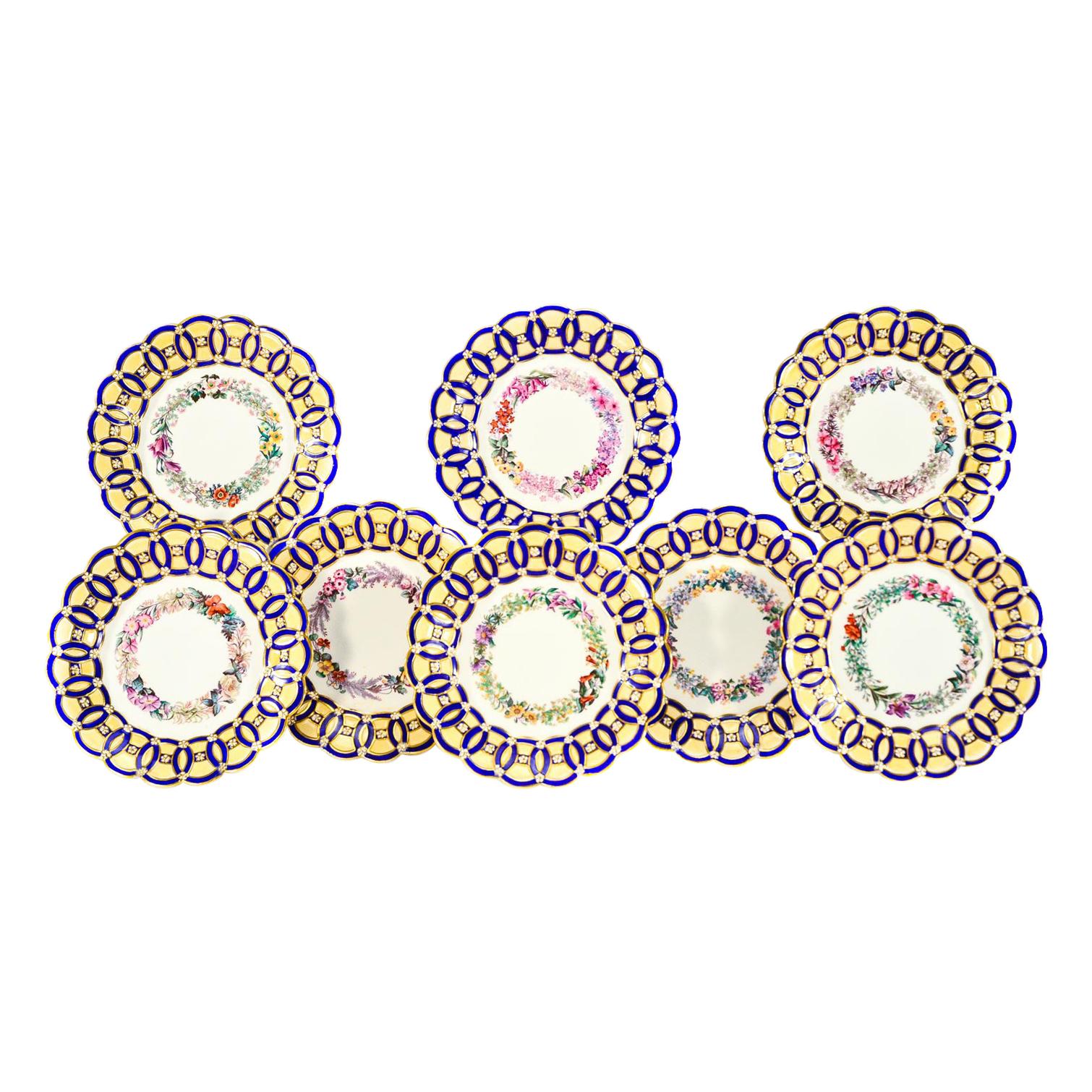Spode Creamware Dessert Service, Avocado Green, Chinoiserie, Regency, 1814
About the Item
- Creator:Spode (Maker)
- Dimensions:Height: 1 in (2.54 cm)Width: 1 in (2.54 cm)Depth: 1 in (2.54 cm)
- Sold As:Set of 16
- Style:Regency (Of the Period)
- Materials and Techniques:
- Place of Origin:
- Period:
- Date of Manufacture:1814
- Condition:Wear consistent with age and use.
- Seller Location:London, GB
- Reference Number:
Spode
Spode is one of the oldest and most distinguished of the great pottery companies of Staffordshire, the time-honored home of English ceramics. The firm’s blue and white bone china transferware is a timeless classic. Spode dishes compose the sort of elegant dinner service that most of us envision on a traditional holiday table.
The company was established in 1770 in Stoke-on-Trent by Josiah Spode, a friend and neighbor of another estimable English ceramist, Josiah Wedgwood. Spode was particularly known for two technical achievements in the firm’s early decades. The first was to develop a standard formula for the making of bone china — a type of porcelain (made with a mixture of bone ash, minerals and clay) that is dazzlingly white and so strong it can be used to create very thin translucent plates and vessels. The other was to perfect the making of transferware. That process involves the transfer of pictorial images inked on tissue paper — such as the garden scenery in the famous Willow dish patterns — onto ceramics that are then sealed with a glaze. In 1833, following the sudden death of Josiah Spode III, business partner W.T. Copeland took over the company and changed its name. Collectors regard Copeland-marked pieces as Spode china. The Spode brand was revived in 1970.
From the 1820s onward, Spode enjoyed tremendous success both in Britain and elsewhere owing to the beauty and vitality of its decorative imagery. By some counts, Spode created more than 40,000 patterns in the 19th century. Many favorite Spode patterns — among them Blue Italian, India Tree, Greek and Woodland — date to the company’s early years. Spode’s most popular pattern, Christmas Tree, was introduced in 1938. Prices for Spode china vary widely, based on the size of the service, its condition and the pattern. An antique dinner service for 12 people or more, in good repair and complete with cups and serving dishes, will generally cost between $10,000 and $20,000. Such Spode services become heirlooms — a proud and timeless addition to a family’s table. And as you will see on these pages, Spode’s rich and varied wares offer a visual feast in and of themselves.
- ShippingRetrieving quote...Ships From: London, United Kingdom
- Return PolicyA return for this item may be initiated within 14 days of delivery.
- Spode Imperial China Dessert Service, Frog Pattern in Mauve, Regency circa 1828By SpodeLocated in London, GBThis is a very striking part dessert service made by Spode in about 1828, which is the Regency era. It is made of Spode's Imperial China and has the Frog pattern in mauve/purple. It consists of a high footed comport...Category
Antique 1820s English Regency Porcelain
MaterialsIronstone
- Spode Felspar Floral Dessert Service, Yellow, Butterfly Handles, circa 1822By SpodeLocated in London, GBThis is a stunning and very rare dessert service made by Spode in 1822, which was the Regency era. This beautiful service, which is in perfect condition, would be fantastic for a summer dinner party! The service is made of Felspar porcelain and decorated in a beautiful pale yellow colour with an "Oeil de Perdrix" pattern and top quality floral reserves. The service consists of two lidded sauce tureens with stands, two deep rectangular dishes, two lozenge shaped dishes, one square dish, and six square dessert plates Spode was the great Pioneer among the Georgian potters in England. Around the year 1800 he perfected the bone china recipe that has been used by British potters ever since, and he was also the leading potter behind the technique of transferware, making it possible for English potters to replace the Chinese export china...Category
Antique 1820s English Regency Porcelain
MaterialsPorcelain
- Spode Felspar Square Dessert Plate, Gilt and Flowers, Regency 1824By SpodeLocated in London, GBThis is beautiful square dessert plate made by Spode around the year 1824. The set was made in the famous Spode Felspar china, which was a bright porcelain that included felspar rock, making it exceptionally robust and very suitable for large table services. This plate was a spare of a large dessert service that was sold previously. An identical service is on display in the Spode Museum in Stoke on Trent, on the original place where this service was produced. In a wonderful moment of serendipity, I happened to be standing and admiring that service exactly the moment the service this plate belonged to came up for auction - and I won the bid, enabling me to present it here to you! Josiah Spode was the great pioneer among the 19th Century potters in England. Around the year 1800 he perfected the bone china recipe that has been used by everyone ever since, and he was also the leading potter behind perfecting the technique of transferware, making it possible for English potters to replace the Chinese export china, which had come to an end around that time, with their own. This was fundamental to a thriving industry that would last for about 150 years and provide half the world with their tableware. In the early 19th Century Spode also made this "Felspar" porcelain, which was even stronger thanks to a large percentage of the strong felspar rock in the recipe. In the early 19th Century, dinner and dessert services were an important part of the social life of the elite, and particularly the dessert service had to be stunning in order to leave guests with a lasting impression of the wealth and power of the owner. This plate is part of such a show piece. The plate has the printed Spode Felspar Porcelain mark in puce, as well as a hand painted pattern number 3765. CONDITION REPORT The plate is in good undamaged antique condition, with its only flaw being some wear as visible in the pictures. Antique British porcelain...Category
Antique 1820s English Regency Porcelain
MaterialsPorcelain
- Spode Felspar Porcelain Plate, Landscape Painting, Regency ca 1822By SpodeLocated in London, GBThis is a dessert plate made by Spode in about 1822, which was the Regency era. The plate is made of Felspar porcelain and decorated with a beautiful hand painted landscape scene. The plate would have belonged to a large dessert service of which each piece had a unique landscape; in fact I sold a dessert service in this pattern a while ago. Spode was the great pioneer among the Georgian potters in England. Around the year 1800 he perfected the bone china recipe that has been used by British potters ever since, and he was also the leading potter behind the technique of transferware, making it possible for English potters to replace the Chinese export china...Category
Antique 1820s English Regency Porcelain
MaterialsPorcelain
- H & R Daniel Dessert Service, Floral with Lilac Sprigging, Regency, 1824By H&R DanielLocated in London, GBThis is a stunning dessert service made by H&R Daniel in 1824. The set consists of a large centre piece comport, two sauce comports (without covers), four large rectangular dishes, f...Category
Antique 1820s English Regency Dinner Plates
MaterialsPorcelain
- Chamberlains Worcester Dessert Service, White with Flowers, Regency, ca 1822By Chamberlains WorcesterLocated in London, GBThis is a spectacular and rare dessert service made by Chamberlains Worcester in about 1822. The service consists of a high comport, 2 square dishes, 1 kidney shaped dish, 3 shell di...Category
Antique 1820s English Regency Dinner Plates
MaterialsPorcelain
- Set of 11 Early Spode Ironstone Imari Dessert Dishes Made circa 1815By SpodeLocated in Fort Lauderdale, FLA set of 11 Imari style ironstone dessert dishes, made by Spode circa 1815. Josiah Spode II began producing stone china in 1813 as an alternative to porcelain. Stone china, also kno...Category
Antique Early 19th Century English Regency Dinner Plates
MaterialsIronstone
- 8 Spode Aesthetic Movement Hand Painted Blue & Ivory Floral Dessert PlatesBy SpodeLocated in Great Barrington, MAThis set of 8 Spode Copelands dessert plates are perfect for a dessert course at an intimate dinner and also likely to be used as display or cabinet p...Category
Antique Early 1900s English Aesthetic Movement Porcelain
MaterialsPorcelain
- 12 Aesthetic Movement Spode Copeland Hand-Painted Dessert Plates Cobalt BlueBy SpodeLocated in Great Barrington, MAThis set of 12 lovely aesthetic movement Spode Copeland's dessert plates feature an eye-catching geometric design decorated with cobalt blue, raised gold and best of all, hand-painte...Category
Antique 1890s English Aesthetic Movement Dinner Plates
MaterialsPorcelain
- Regency Large Coalport Porcelain Dessert Service-Thirty Nine PiecesBy Coalport PorcelainLocated in Downingtown, PARegency-period Coalport Porcelain service is of the finest quality in terms of the porcelain itself and the decoration, each shape is particularly well designed with a distinctive sh...Category
Antique Early 19th Century English Regency Porcelain
MaterialsPorcelain
- Spode New Stone China Dinner Service Eighty Four Pieces, Pattern #3504By SpodeLocated in Downingtown, PASpode New Stone China Dinner Service- Eighty Four Pieces, Pattern #3504, Circa 1820 The service is decorated in an Imari pattern in iron red light and...Category
Antique Early 19th Century English Georgian Dinner Plates
MaterialsIronstone
- Large English Porcelain Imari Pattern Dessert and Tea Service, Spode, circa 1815Located in New York, NYIron-red uppercase Spode mark and pattern 2213. Richly painted in the Imari palette and enriched in pale-blue, green and gold with flowering shrubs and a tree, the border with altern...Category
Antique 1810s English Dinner Plates
MaterialsPorcelain

